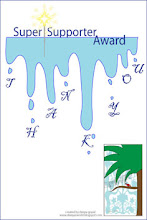Living with the Sea
Man has always been fascinated by power and beauty. He finds it both a challenge and an opportunity; challenge to tame the powerful and opportunity, to conquer the beauty. And oceans and seas across the world offer both.
Naturally, since time immemorial, large water bodies have always attracted mankind in various ways. Oceans and seafronts with vast expanse of water spread across the horizons – all the more so. Ferocious waves breaking over distant rocks with a roar, turning the shore white with foam and spreading a fine mist in the air around, is a thrilling scene to behold.
The gentle ripples whispering sweet nothings in the ears of scurrying hermit crabs in golden sandy beaches is an equally enchanting and refreshing experience. Seashores, waves and beaches have always excited and stimulated the poets, authors and painters to contribute exquisite pieces to their respective fields of creativity.
Oceans and deep seas have their own share of mysteries, myths, legends and parables – be it the mermaids, fire-spitting dragons, sea-demons, water spouts, whirl-pools baffling underwater currents or the scientific puzzles like the Bermuda Triangle. There are also the enticing lagoons, the captivating mangrove lined creeks beaconing the nature lovers.
Mangrove lined creek near Baratang Island (South Andaman)
Water sports have acquired their own dimensions over the years – adventure sports, more so. Wind surfing, yachting, kayaking and trans-oceanic expeditions have always allured the brave and courageous people. These events test the courage, endurance and spirit of adventure of the enthusiasts.
Swimming, the oldest water sport has lost much of its charm. Yet it is the first brush with water and that too physical and intimate one. It remains and will always remain man’s primary engagement with water.
Water Sports for tourists at Aberdeen Water Sports Complex, Port Blair
Sea or for that matter an ocean is not all about Cleopatra’s beauty or Wordsworth’s poetry or Michelangelo’s paintings. It is much more substantial. There is an entire universe out there in the sea – much more exciting and breathtaking. A whole world of plants and animals, the corals, the weeds etc. add life and colour to the mystery of the sea.
It is a major source of food for the teeming millions and so far, just about 2% of the seafood resources have been exploited. Various species of fish, sea-weeds and other organisms make a substantial contribution to manufacture of drugs and medicines. Fossil fuel and precious mineral-nodules hold a great promise to meet our future demands.
It is not for nothing that tens of thousands of people rush to waterfronts to get themselves refreshed and rejuvenated. The entire economy of small coastal and island nations depends entirely on tourism. Fishery is the mainstay of another dozens of nations providing direct or indirect employment to millions of people.
But for all the bounties we receive from the sea, what do we give it in return?
We pollute its crystal clear water, jeopardizing plant and animal lives, corals and sea-weeds. We spill millions of tons of crude oil when a super tanker bursts. We discharge all the filth into it. But it still bears all the torture with magnanimity and forgiveness.
Sea is, however, not a dead entity. It not only has a body but a soul, as well. It has sentiments, feelings and ego as any human being. It breathes, laughs, cries and demonstrates all the human sentiments. It feels hurt, injured, neglected and insulted when the people who depend on it for their very survival and sustenance ignore it continuously. It also needs love, respect and caring like any living being.
It can get furious, vindictive and utterly destructive when people fail to understand its displeasure and hurt; again, as we all do. And it did get furious – on December 26, 2004, 6 years ago from now.
Rajiv Gandhi Water Sports Complex, Port Blair battling with Tsunami at 7 a.m., on 26th, Dec, 2004
One can surmise the fate of this victim of the Tsunami of 26th December, 2004
There is no gainsaying the fact that we have been neglecting the sea for much too long – to our own peril. In fact, we have been taking it for granted as a benign, compassionate and benevolent provider of sustenance. We took it that we did not owe it anything in return. Not even the necessity of understanding it.
There are examples galore to substantiate my point. Though surrounded by water all around, apart from gazing at the sea from the safety of shores, we have done precious little to go near it, touch it, feel it and roll with its waves. It would have enabled us to get a feel of the varying moods of the sea expressed through the temperature, ‘charge’ and the churnings at a given moment.
Humanity is engaged in a self destructive pursuit of material comfort, power and status to the exclusion of everything else. Attempts to explore and understand Mother Nature is no more a virtue. No wonder, we have lost the basic knowledge that such lowly creatures as rats, snakes and monkeys possess, leave aside tribes. The result is there for everyone to see. The tribes that were farthest from civilization, as also the animals, sustained the least or no loss of life.
A Jarawa woman showing her catch
Until a couple of decades back, fishing and hunting were the hobbies, nay a craze of a large number of local inhabitants of all hues in the Andaman and Nicobar Islands. But gradually everyone gave it up and the present generation hardly knows anything about it.
Swimming used to be a regular event on Sundays and holidays at the Aberdeen Jetty in Port Blair, but now hardly any crowd is seen on such days. Even if children gather there to take a jump into the water and learn swimming on their own, they are shooed away. It is a matter of shame that most of the people in these islands of ours do not know proper swimming. Even those who know it, know it imperfectly that would not take them far in a crisis.
Our sports-persons participate in national and international events of rowing, canoeing and kayaking but in annual sports and athletic meets there are no water sports events. Such rudimentary event as swimming fails to get a place in the scheme of things. Although, with a little effort, water sports like rowing, canoeing, kayaking, yachting, para-sailing, water ski, pedal boating etc. can be promoted easily. It makes a good business sense too.
The Lt. Governor, his officers and the Member of Parliament with the Commonwealth Games baton, earlier this year
My head goes down in shame when I see people in the mainland of our country engaged in rowing and pedal-boating in lakes and we, with water all around us, do not have a rowing club. And, how many people in the islands can handle a sail boat?
A faint attempt was made by some interested people a couple of years ago, to get swimming included in the school curriculum. But obviously, it is gathering dust somewhere in the files of the lackadaisical administration, which is handled by the bureaucrats posted mostly only for a tenure of a couple of years on transferable basis by the Centre at New Delhi. Hence, the listlessness in the implementation of long term policies, the modus operandi of which is long-winded.
To add to the ill fate of the islanders, a flock of renowned NGOs like Oxfam, Save the Children, Action Aid, West Bengal Voluntary Health Association, Butterfly, Prayas and the rest, who ‘ventured to work’ for the welfare of the tsunami affected islanders of Andaman & Nicobar Islands after the fiasco of 26 December 2004, are also yet to contemplate working in the field of inculcating the fundamental protocol of living by the sea.
ICDS Centers built by the NGO, Save the Children at Car Nicobar
In the worst Chilean tsunami in 1960 spawned by a magnitude 9.5 earthquake, the loss of life was 3,500, simply because the people knew and understood the sea. We are installing Tsunami Monitoring & Warning Systems in a big way. But let that not deceive us into complacence.
Even if a Warning System were in place, I doubt if Southern Group of Islands could have been saved. Tsunami had hit within ten minutes of the massive tremor felt by the people there. There was simply not enough response time. In case an earthquake in Great Nicobar or Diglipur or Barren Island spawns a tsunami, there would simply not be sufficient time to avert a catastrophe.
Extensive awareness campaign and individual preparedness to face a tsunami and; the skill, in case someone is caught in a killer wave, would only save lives. In such a moment of crisis, it boils down to individual life and the individuals would have to prepare themselves to face it: Government efforts notwithstanding.
Today is yet another very significant day in the history of the great Indian Freedom Movement. These exemplary islands that once reverberated with the footsteps of the daring freedom-fighters, are today celebrating the 67th Anniversary of the hoisting of the National Tri-color for the first time on the Indian soil by Netaji Subhash Chandra Bose.
It was on this day i.e. December 30, 1943, that one of the greatest freedom fighters in the history of modern India, Netaji Subhash Chandra Bose had hoisted the National Flag for the first time at the Gymkhana Ground, Port Blair, the current capital of Andaman & Nicobar Islands, declaring the Islands, the first Indian Territory freed from the British rule.
***A big Salute to Netaji!!! ***
The intrepid son of Mother India!
And the last but not the least: a word of experience in retrospect for the islanders of the world:–
The sea all around us is a genuine friend of ours. We are destined to live by its side and also enjoy its bounties. Let’s do it with its leave. It will be a relationship of mistrust if we live by it but not understand it. And: love it.
Wish you all a
Happy, Prosperous & Peaceful
New Year 2011!!!



































